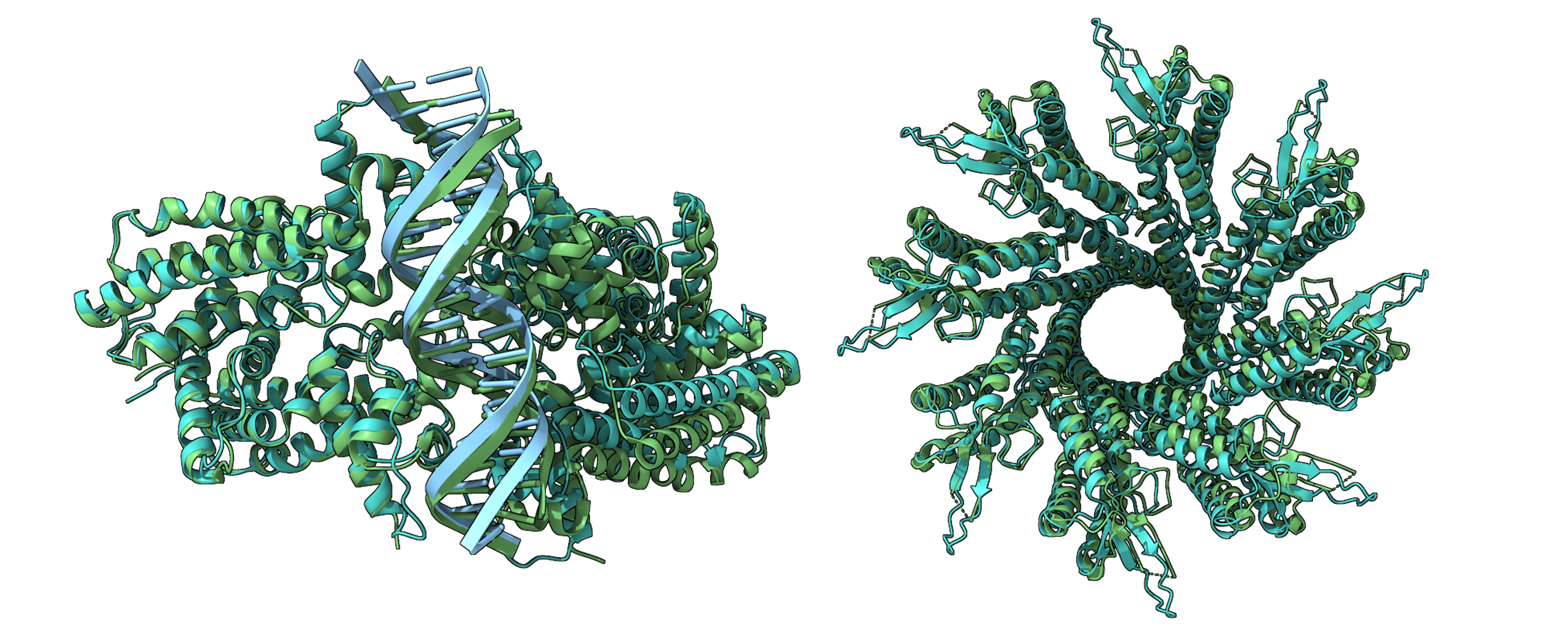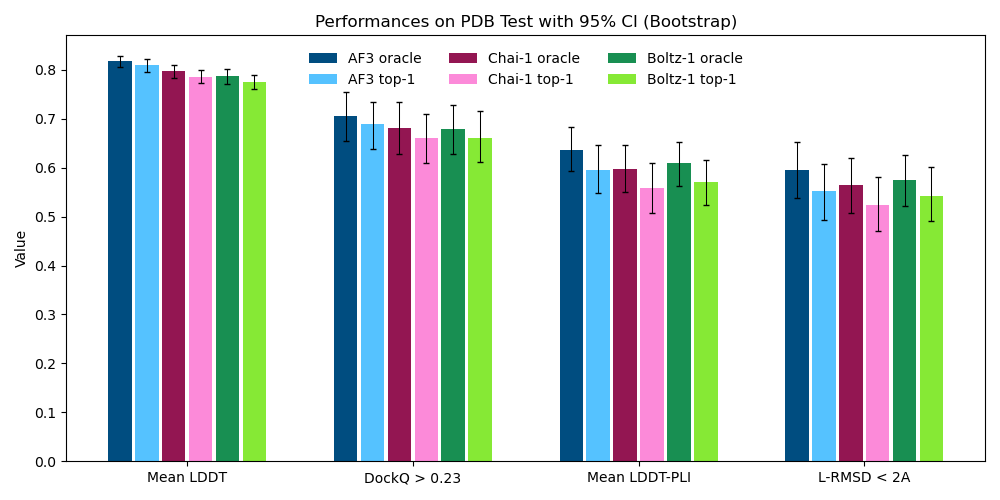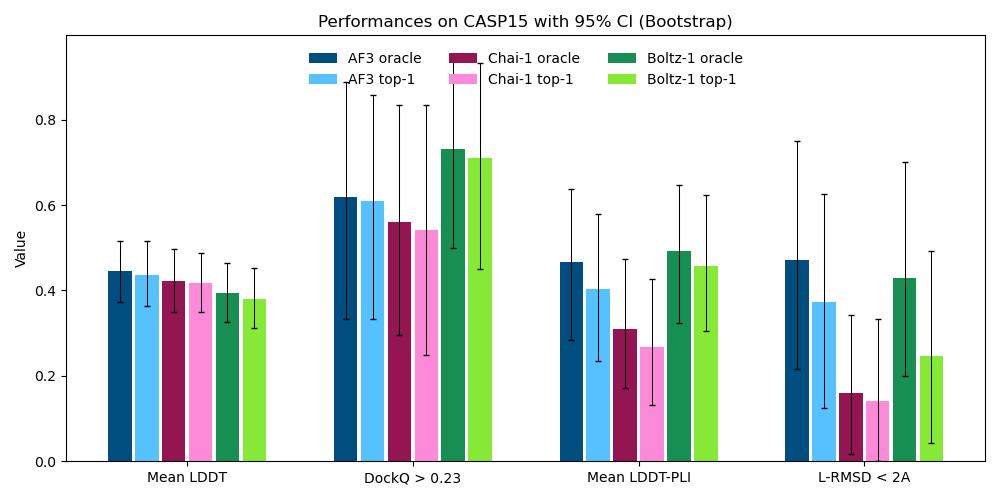Boltz-1 is the state-of-the-art open-source model that predicts the 3D structure of proteins, RNA, DNA, and small molecules; it handles modified residues, covalent ligands and glycans, as well as condition the generation on pocket residues.
For more information about the model, see our technical report.
Install boltz with PyPI (recommended):
pip install boltz -U
or directly from GitHub for daily updates:
git clone https://github.com/jwohlwend/boltz.git
cd boltz; pip install -e .
Note: we recommend installing boltz in a fresh python environment
You can run inference using Boltz-1 with:
boltz predict input_path --use_msa_server
Boltz currently accepts three input formats:
-
Fasta file, for most use cases
-
A comprehensive YAML schema, for more complex use cases
-
A directory containing files of the above formats, for batched processing
To see all available options: boltz predict --help and for more information on these input formats, see our prediction instructions.
To encourage reproducibility and facilitate comparison with other models, we provide the evaluation scripts and predictions for Boltz-1, Chai-1 and AlphaFold3 on our test benchmark dataset as well as CASP15. These datasets are created to contain biomolecules different from the training data and to benchmark the performance of these models we run them with the same input MSAs and same number of recycling and diffusion steps. More details on these evaluations can be found in our evaluation instructions.
If you're interested in retraining the model, see our training instructions.
We welcome external contributions and are eager to engage with the community. Connect with us on our Slack channel to discuss advancements, share insights, and foster collaboration around Boltz-1.
- Auto-generated MSAs using MMseqs2
- More examples
- Support for custom paired MSA
- Confidence model checkpoint
- Chunking for lower memory usage
- Pocket conditioning support
- Full data processing pipeline
- Colab notebook for inference
- Kernel integration
Our model and code are released under MIT License, and can be freely used for both academic and commercial purposes.
If you use this code or the models in your research, please cite the following paper:
@article{wohlwend2024boltz1,
author = {Wohlwend, Jeremy and Corso, Gabriele and Passaro, Saro and Reveiz, Mateo and Leidal, Ken and Swiderski, Wojtek and Portnoi, Tally and Chinn, Itamar and Silterra, Jacob and Jaakkola, Tommi and Barzilay, Regina},
title = {Boltz-1: Democratizing Biomolecular Interaction Modeling},
year = {2024},
doi = {10.1101/2024.11.19.624167},
journal = {bioRxiv}
}In addition if you use the automatic MSA generation, please cite:
@article{mirdita2022colabfold,
title={ColabFold: making protein folding accessible to all},
author={Mirdita, Milot and Sch{\"u}tze, Konstantin and Moriwaki, Yoshitaka and Heo, Lim and Ovchinnikov, Sergey and Steinegger, Martin},
journal={Nature methods},
year={2022},
}

